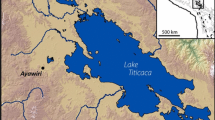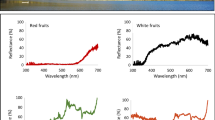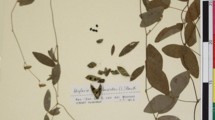Summary
A series of avocado seeds recovered from the deposits in El Riego, Purrón and Coxeatlán Caves of the Tehuaeán area show gradual increase in size and a change in shape from oldest to youngest. The oldest cotyledon from Zone XXIV of the Coxcatlán Cave deposit is dated at least 7000 B. C. It was probably brought into the Cave from a native tree growing in mesic forest in one of the barrancas in the mountainside to the east. The quantity of avocado seeds and the presence of other undoubtedly cultivated plants indicates that avocados probably were being planted on nearby streamsides by 6500 B. C. The dramatic increase in the figure obtained by multiplying the length by the width of the largest avocado cotyledons proves that selection for larger fruit was markedly effective by 900 B. C. Since avocados are a long-lived tree crop and the results of selection are not readily apparent, the increase in size is particularly significant.
While the average size of the avocado cotyledons increases from older to younger cultural horizons, the smaller seeds remain abundant. Evidently trees that bore small or poor fruit were not eliminated and they probably slowed the process of selection materially for trees that bore larger and better fruit.
Similar content being viewed by others
References
Anderson, E., 1950. Variation in avocados at the Rodiles plantation. Ceiba1: 50–55.
Blake, S. F. 1920. A preliminary revision of the North American and West Indian avocados(Persea spp.) 3. Wash. Acad. Sci.10: 9–21.
Coit, J. E. 1948. Mexican explorations of 1948. Calif. Avocado Soc. Yrbk.1948: 59–62.
Contreras, A. A. 1942. Mapa de las Provincias Climatologicas de la Republica Mexicana.
Griswold, H. B. 1946. Primitive avocados of Central America and Mexico. Calif. Avocado Soc. Yrbk.1946: 103–105.
Kopp, Lucille E. 1966. A taxonomic revision of the genusPersea in the western hemisphere (Persea Lauraceae). Mem. N. Y. Bot. Gard.14 (1): 1–120.
MacNeish, R. S. 1964. Ancient mesoamerican civilization. Science143: 531–537.
Popenoe, W. 1941. The avocado—a horticultural problem. Calif. Avocado Soc. Yrbk.1941: 79–85.
— and Williams, L. O. 1947. The expedition to Mexico of October, 1947. Calif. Avocado Soc. Yrbk.1947: 22–28.
— and Williams, L. O. 1948. Mexican explorations of 1948. Calif. Avocado Soc. Yrbk.1948: 54–58.
Schroeder, C. A. 1947. The expedition to Mexico of May, 1947. Calif. Avocado Soc. Yrbk.1947: 29–33.
Shamel, A. D. 1938. Avocado studies in Mexico in 1938. Calif. Avocado Soc. Yrbk.1938: 67–85.
Smith, C. E., 1965. Flora, Tehuacán Valley. Fieldiana. Bot.31: 107–143.
Author information
Authors and Affiliations
Rights and permissions
About this article
Cite this article
Smith, C.E. Archeological evidence for selection in avocado. Econ Bot 20, 169–175 (1966). https://doi.org/10.1007/BF02904012
Received:
Issue Date:
DOI: https://doi.org/10.1007/BF02904012




